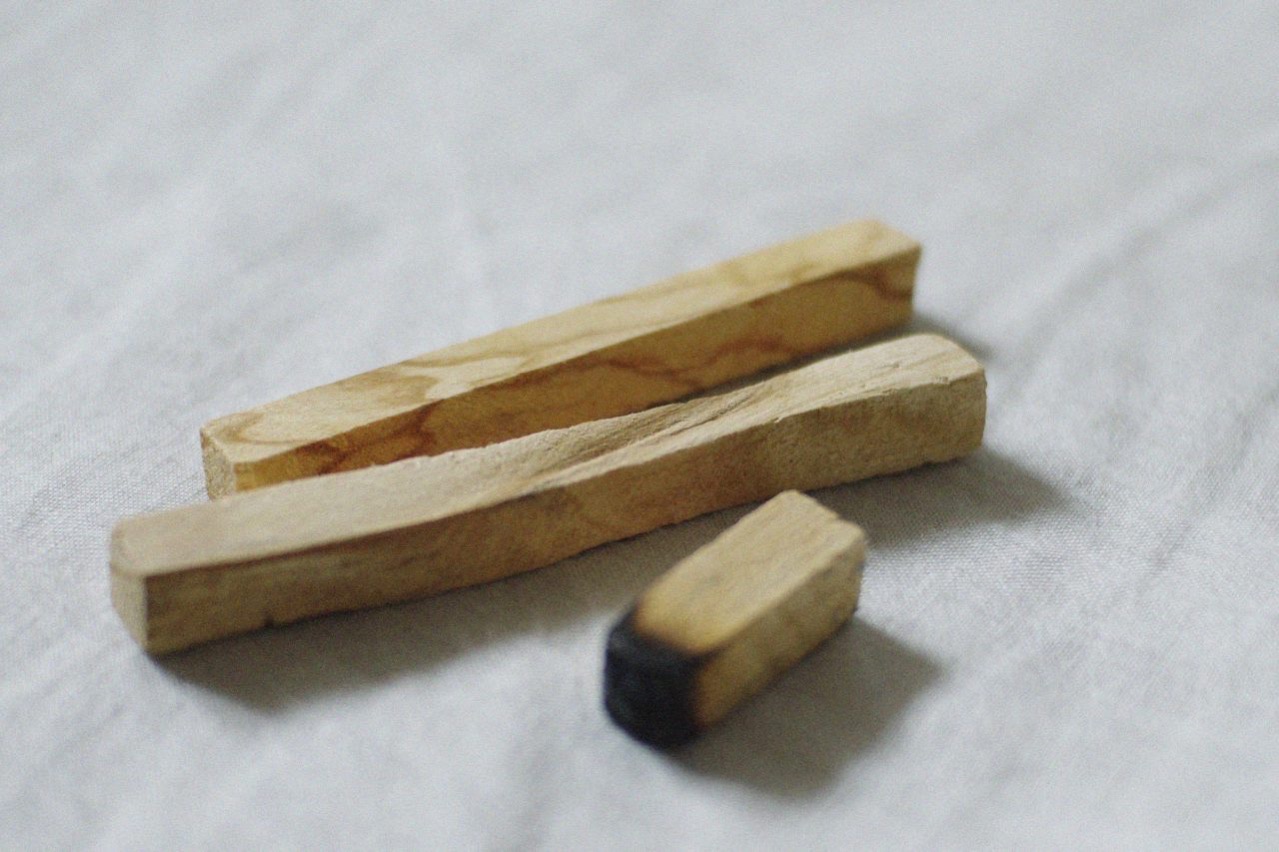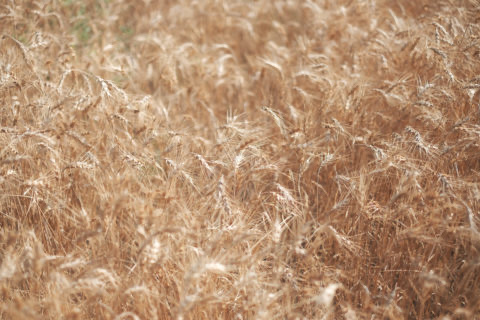
尋求洗滌心靈、追求身心平衡,恍如人的一個永恆慾望;不過總有人選擇了背道而馳的方式,從而交織出這世界的紛紛擾擾。因此,不同宗教、習俗都有各自所信奉的淨化方式,例如在亞洲和佛教之中,就有為人熟悉的檀香,信奉耶穌基督的,則偏好燒乳香和沒藥,近年一躍成主流的新時代運動,推舉北美洲原住民慣用的白鼠尾草。而在南美洲,則有自印加文明時期就被廣泛地採用的秘魯聖木(Palo Santo)。
秘魯聖木的學名為 Bursera Graveolens,現於墨西哥、秘魯、委內瑞拉、哥斯達黎加、薩爾瓦多、危地馬拉、洪都拉斯、哥倫比亞和厄瓜多爾等地都能找到這種香水樹的蹤影。昔日由於西班牙僧侶發現秘魯聖木的淨化和療癒能力,所以將樹命名為「Palo Santo」,有「聖木」(Holy Wood)或「聖徒之木」(Wood of the Saints)的意思。而自古印加時期,秘魯聖木更用於薩滿儀式之中,以焚燒木頭所飄散的煙與香氣來驅散惡靈和頑疾。印加人非常重視聖木,質素較下等的會用作煙燻淨化,中等質素的聖木則用來製作法仗,而最頂級的聖木更是永久禁止開採,並視作神靈一樣膜拜。時至今天,南美洲西面安第斯山脈一帶的薩滿和巫師,仍以秘魯聖木作為儀式中的淨化工具。
現代的城市可說是十年一變天,人工智能即將徹底改變大家的生活方式,然而過渡開發和病態消費終究沒能回應追求身心平衡的慾望。因此,昔日文明沿用的靈修與淨化方式,也被帶到城市生活之中。而秘魯聖木十分適合都市人,除了含有高純度的檸烯成分,當中藥用性的松烯更具有非常強大的抗氧化、消炎和抗菌作用。同時聖木中的單帖烯、單帖醇與氧化物分子也能針對療癒感冒咳嗽、肌肉痠痛與關節僵硬。在印加時代起,秘魯聖木更是一種廣泛使用的天然驅蟲劑,尤其適用於香港這種潮濕炎熱的地方。另外,秘魯聖木蘊含獨特的木香和柯巴脂香,散發出一種內斂、柔和而溫暖的香氣,也能有助減少不安煩躁、恐懼和焦慮,進而寧神靜緒,為接下來的靈修做好準備。
一般來說,秘魯聖木自然死亡後必需保持自然狀態四至十年,因為死後的聖木仍然會持續發酵出呈油脂狀的抗體,而且發酵時間越長,得出的單萜烯和單萜醇就越多。因此,聖木一經砍伐,除了消費價值大減,更讓聖木本身無法經歷完整、也最重要的蛻變過程。因此,今天的秘魯已頒定秘魯聖木為國家級聖木,嚴禁隨意採伐,只有少數公司可以獲得國家合法採伐許可,這是為了捍衛聖木得以經歷生命中最重要轉化的權利。
每次燃點起秘魯聖木,請不要遺忘那能夠溫暖人心的氣味,乃是提煉自生死悠關的轉化。或許要更大的苦難與折騰,才足以成就我們的轉化,走出抑鬱與陰霾。
It would seem that human beings have always been yearning to cleanse their soul and to seek a balance in their mind and body. Nevertheless, there are always bound to be those who take the opposite way, thereby weaving together a web of clamours and chaos in this world. Therefore, different religions and traditions have their own beliefs in purification methods. For instance, in Asia and in Buddhism, sandal wood is widely known whereas in Christianity, the burning of myrrh and frankincense is preferred. The New Age Movement, which has been catapulted to the mainstream in recent years, promotes white sage commonly used by native Americans. As for South America, Palo Santo trees have been widely used since the times of the Inca civilization.
The fragrant wood Palo Santo, whose botanical name is Bursera Graveolens, can be found nowadays in countries such as Mexico, Peru, Venezuela, Costa Rica, El Salvador, Guatemala, Honduras, Colombia and Ecuador. In the old days, Spanish monks discovered the purification and healing powers of this holy tree, and thus, decided to name it “Palo Santo”, which means Holy Wood or Wood of the Saints. Back in the Inca era, Palo Santo had even been used in Shamanism ceremonies. Burning their wood would give off smoke and aroma for driving away evil spirits and recurring illnesses. The Incans took Palo Santo very seriously. Inferior woods were used for their smoke and purification while those of medium quality were used for making staffs. The logging of those of the highest quality had always been prohibited. Instead, they were worshipped in the same way as the deities were. Even nowadays, shamans and wizards residing in the vicinity of the Andes mountain range in the western part of South America still use Palo Santo for purification purposes in ceremonies.
In the modern age, every decade or so witnesses a city undergoing a major transformation, and artificial intelligence is about to completely transform our lifestyle. However, over-development and pathological consumption can never respond to our desire for an equilibrium in body and soul. Thus, spiritual training and purification exercises practiced in ancient civilizations have found their way into city life. Deemed considerably suitable for city dwellers, Palo Santo not only contains highly pure limonene, but also medicinal terpenes, which have strong anti-oxidizing, anti-inflammatory and antibacterial abilities. At the same time, the monoterpenes, monoterpenols and oxide components inside them can also serve to cure cold, coughing, muscle pain and joint stiffness. Back in the Inca era, Palo Santo used to be a widely used natural insect repellent, thereby especially well suited to hot and humid areas such as Hong Kong. In addition, Palo Santo also has a unique wood and copal aroma, giving off a subtle, gentle and warm scent, which can help relieve anxiety, agitation and fear, as well as tranquilize the mind in preparation for spiritual training.
Generally speaking, Palo Santo needs to remain in its natural state for four to ten years after they die naturally. It is because following their death they will continue to ferment, producing antibody in the form of oil. The longer the fermentation process, the more monoterpenes and monoterpenols will be produced. Therefore, if cut, not only will these sacred trees suffer a significant drop in their value, they will also not be able to complete their most important metamorphosis. For this reason, nowadays Peru has designated Palo Santo as national sacred wood and any form of casual harvest is strictly forbidden. Only a handful of companies have gained logging permission from the national government so as to safeguard the sacred wood’s rights to undergo the most important transformation in its life.
Whenever you light a piece of Palo Santo, please do not forget the aroma that can warm your hearts. It has been extracted from a life-and-death transformation. Perhaps only greater suffering and hardship will suffice to enable our transformation, leading us away from depression and darkness.





